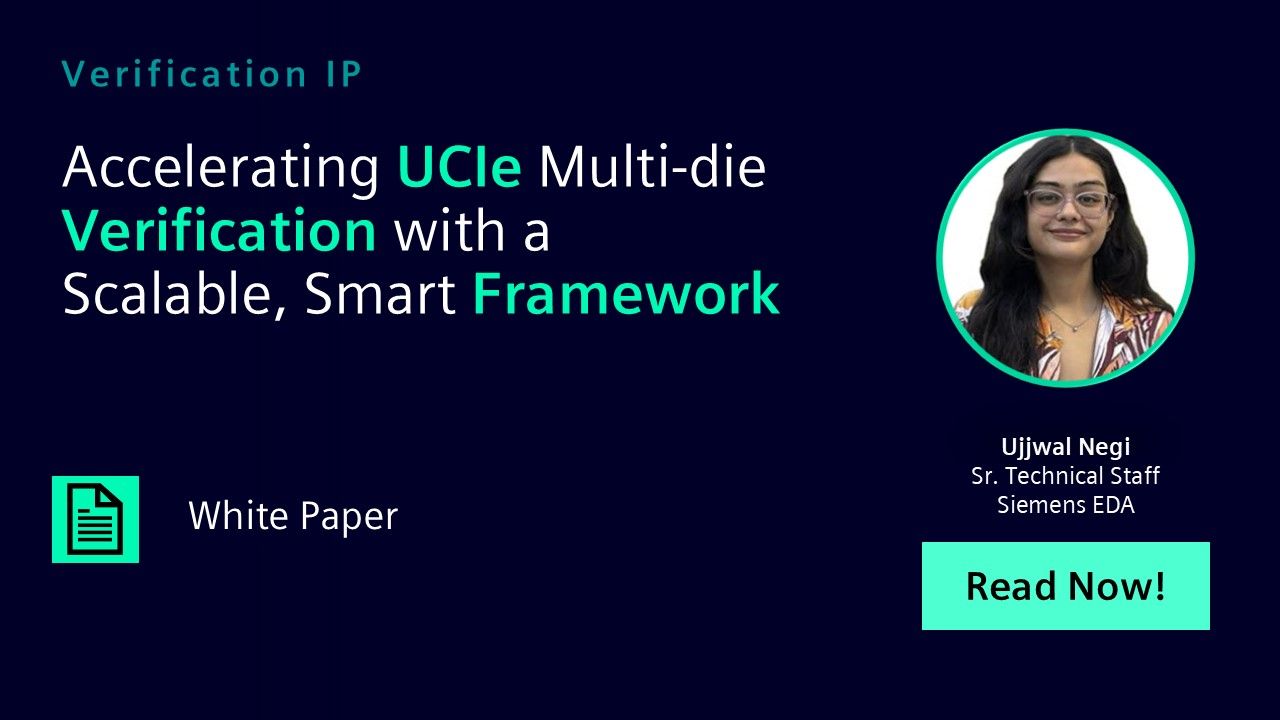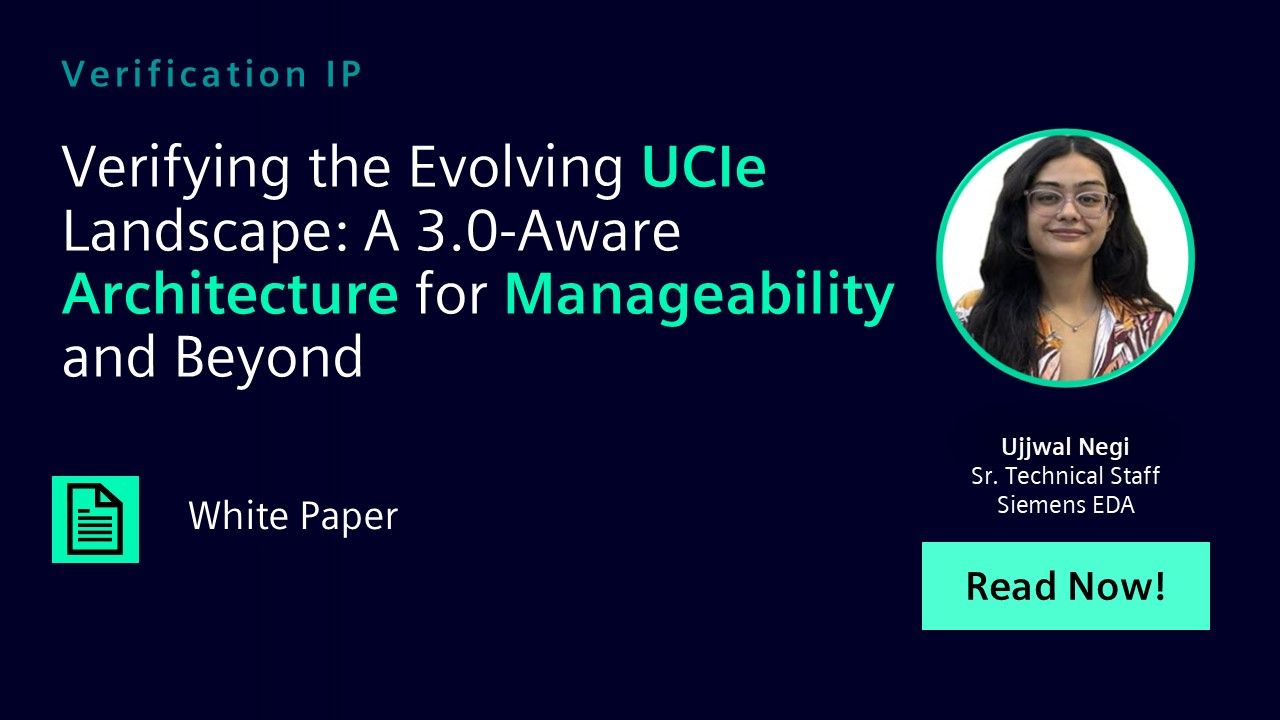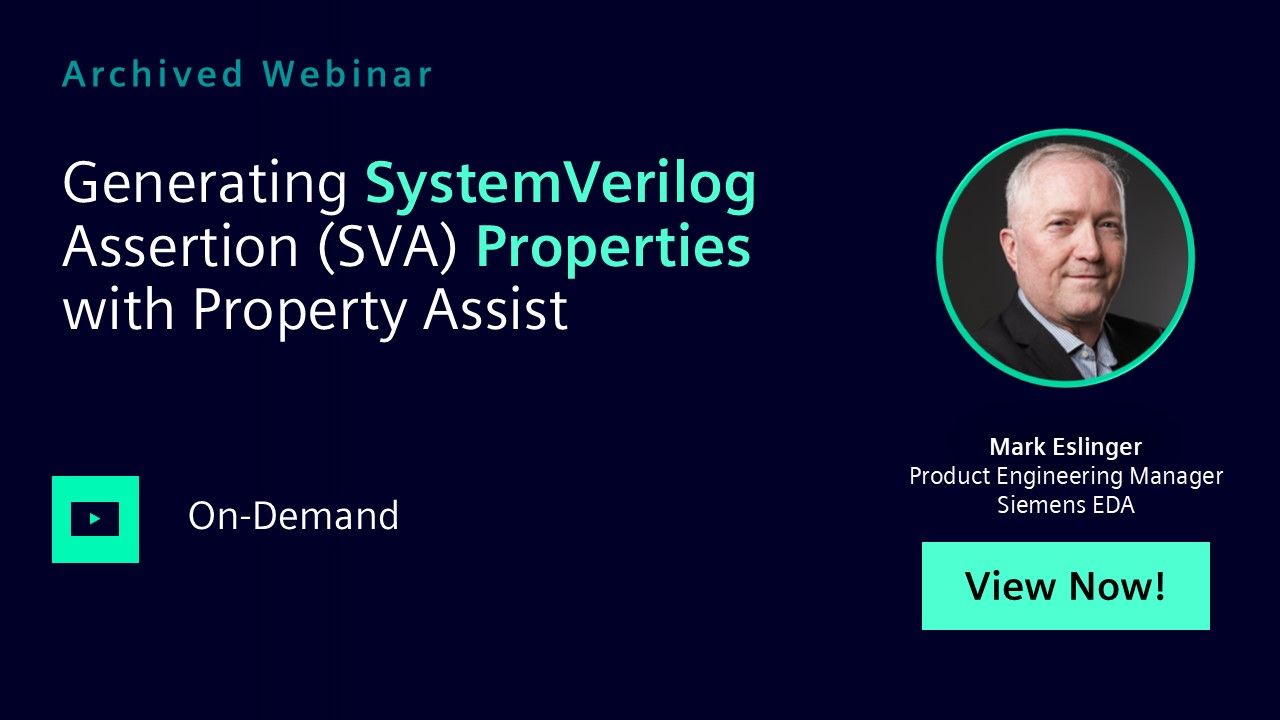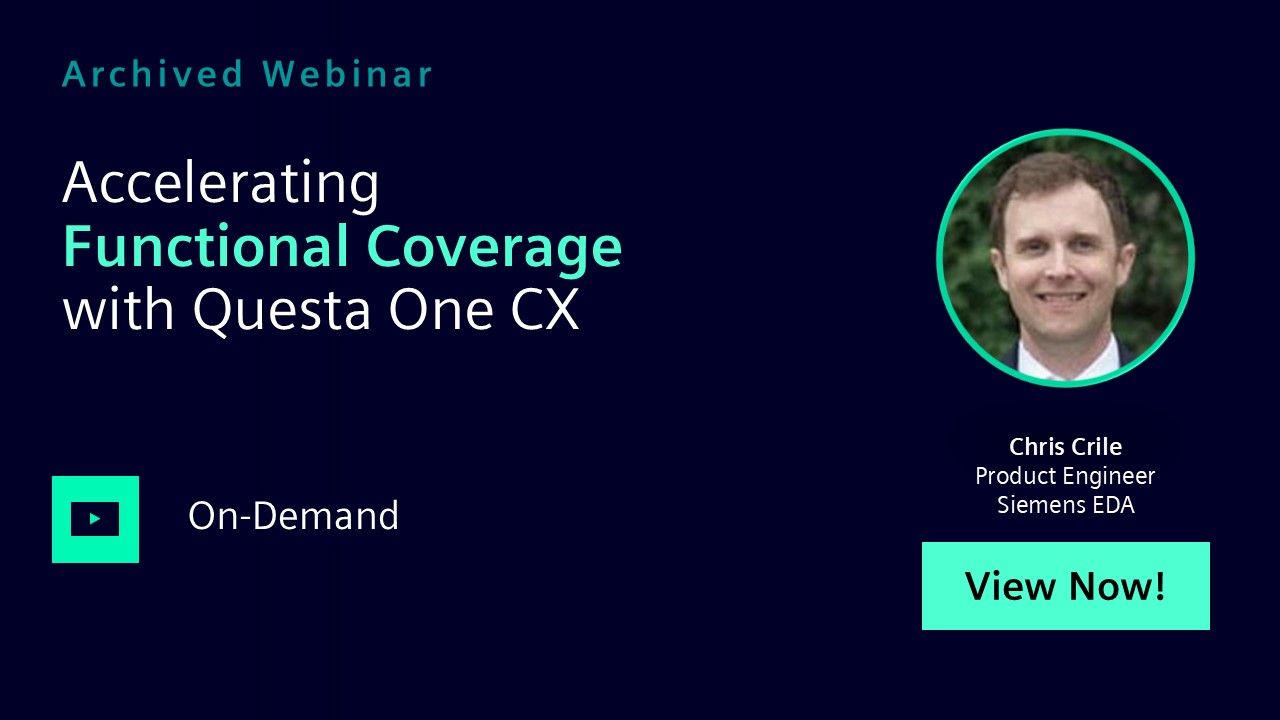Search Results
Filters
Advanced Search
2170 Results
-
From Novice to Expert: Your Tutorial Roadmap at DVCon Europe 2025
Resource (Verification Horizons Blog) - Sep 17, 2025 by Joe Hupcey
In support of Verification Academy’s educational mission, Siemens is either directly sponsoring or contributing to the following five tutorials at the upcoming DVCon Europe 2025 on Tuesday, October 14th.
-
No Reset? No Worries! Smarter Ways to Tackle RDCs to NRRs
Resource (Verification Horizons Blog) - Sep 16, 2025 by Reetika
As system-on-chip (SoC) designs continue to evolve, they’re not just expanding in size—they’re growing in complexity. Among the many challenges this evolution brings, one of the most subtle yet critical is the handling of resets. Modern architectures often juggle multiple asynchronous reset sources along with sequential elements, such as non-resettable registers (NRRs), which operate without dedicated reset pins.
-
Class is Back in Session this October: Verification Academy’s Cutting-edge Weekly Webinar Series
Resource (Verification Horizons Blog) - Sep 16, 2025 by Joe Hupcey
Verification Academy’s fall semester starts this October with the following series of weekly deep dive webinars.
-
Functional Verification Insights: A Conversation with Abhi Kolpekwar
Resource (Verification Horizons Blog) - Sep 15, 2025 by Harry Foster
Over the years, I’ve had the privilege of sharing industry data and analysis through the Siemens EDA & Wilson Research Group Functional Verification Studies . Those findings help us understand the challenges our industry faces—rising complexity, resource pressures, and declining first-silicon success rates.
-

Automating Clock-Domain Crossing Verification for DO-254 (and Other Safety-Critical) Designs
Paper - Sep 10, 2025 by Kurt Takara
DO-254 methodologies must ensure that a device is going to behave as specified, and that everything possible is done to catch bugs before the device will be operating in flight. DO-254 projects should use an automated solution such as Questa™ CDC designed specifically for CDC verification to bridge the knowledge gap between design and verification teams, and to ensure comprehensive prevention of this problem.
-
The Grapes Are Back! And Cake! And C Tests with UVM and Transactions For All! Easy.
Resource (Verification Horizons Blog) - Sep 08, 2025 by Rich Edelman
The grapes have returned – this weekend was “harvest” time. Jelly everywhere. A lot like this year here at Siemens. Lots of activity. New products. Announcements. Products everywhere. Jelly everywhere.
-
Why First-Silicon Success Is Getting Harder for System Companies
Resource (Verification Horizons Blog) - Sep 03, 2025 by Harry Foster
Everyone wants their own chip. Few are hitting first-silicon success. That’s the paradox shaping today’s semiconductor landscape. In the 2024 Siemens EDA / Wilson Research Group Functional Verification Study , which I authored, we found that only 14% of ASIC/SoC projects achieved first-silicon success — the lowest figure in more than twenty years of tracking this data.
-
Siemens at DVCon India 2025: Driving the Future of Design and Verification
Resource (Verification Horizons Blog) - Aug 26, 2025 by Dennis Brophy
DVCon India 2025 , taking place on September 10–11 at the Radisson Blu, Marathahalli, Bangaluru , will mark a special milestone—its 10th anniversary . Over the past decade, DVCon India has grown into one of the region’s most influential conferences for design and verification professionals. Siemens will be prominently featured across vision talks, technical papers, posters, and workshops, showcasing its leadership in AI-driven EDA, hardware-assisted verification, and formal methodologies.
-
Reminder: DVCon U.S. 2026 Call for Papers – Sept 7th Deadline Approaching!
Resource (Verification Horizons Blog) - Aug 25, 2025 by Dave Rich
The DVCon U.S. 2026 Call for Papers deadline is Sunday, September 7th at 11:59 PM . Don’t miss your chance to share your expertise and help shape the future of design and verification.
-

SystemVerilog Transactions, UVM and C: Correlation in a Functional Verification Environment
Paper - Aug 20, 2025 by Rich Edelman
Transaction level modeling and transaction level debug have been in use for years in SystemVerilog and Verilog simulation and verification, but not as available in VHDL, perhaps not used in GLS simulation and C testbenches, and taking new forms in system level modeling. This paper re-introduces and refreshes transaction recording and debug and suggests how each abstraction level can be used productively with worked examples runnable by the reader.
-
SystemVerilog Transactions, UVM and C: Correlation in a Functional Verification Environment
Resource (Paper (.PDF)) - Aug 20, 2025 by Rich Edelman
This paper re-introduces and refreshes transaction recording and debug and suggests how each abstraction level can be used productively with worked examples runnable by the reader.
-
SystemVerilog Transactions, UVM and C: Correlation in a Functional Verification Environment
Resource (Slides (.PDF)) - Aug 20, 2025 by Rich Edelman
This paper will review the various APIs and methods for transaction recording and demonstrate the concepts using an example. That example can be reused in reader code and is open source.
-
Verifying the Evolving UCIe Landscape: A 3.0-Aware Architecture for Manageability and Beyond
Resource (Paper (.PDF)) - Aug 13, 2025 by Ujjwal Negi
This paper details a verification strategy for UCIe 3.0 designs, integrating both legacy manageability architecture and emerging UCIe 3.0 features into a reusable, scalable framework.
-
Accelerating UCIe Multi-die Verification with a Scalable, Smart Framework
Resource (Paper (.PDF)) - Aug 13, 2025 by Ujjwal Negi
Multi-die architecture introduces layers of verification complexity along with protocol-level challenges. Questa One Avery VIP for UCIe provides a protocol-aware, layered verification framework that scales from block-level validation to full system-level testing. Its automation capabilities enable faster set up and targeted testing across diverse DUT configurations. Integrated debugging tools provide high observability and faster root-cause analysis.
-

Accelerating UCIe Multi-die Verification with a Scalable, Smart Framework
Paper - Aug 13, 2025 by Ujjwal Negi
The Avery UCIe VIP provides a highly efficient and customizable verification environment, significantly reducing the effort and time needed. With automatic testbench generation, users can move from environment setup to actual verification almost instantly. The combination of configurable APIs, protocol-aware callbacks, and flexible parameter controls gives users complete control to simulate and reproduce any scenario, including complex corner cases, without rewriting their environment.
-

Verifying the Evolving UCIe Landscape: A 3.0-Aware Architecture for Manageability and Beyond
Paper - Aug 13, 2025 by Ujjwal Negi
This white paper details a verification strategy for UCIe 3.0 designs, integrating both legacy manageability architecture and emerging UCIe 3.0 features into a reusable, scalable framework. Built on a layered UVM architecture, Questa One™ Avery™ VIP for UCIe enables flexible modeling of complex domains through configurable APIs and supports automated discovery and routing table set up for both direct and indirect management paths.
-
Siemens EDA at FMS 2025 – Shaping the Future of Memory and Storage
Resource (Verification Horizons Blog) - Jul 31, 2025 by Dennis Brophy
Siemens EDA is proud to be a featured participant at the Future of Memory and Storage (FMS) 2025 conference, taking place at the Santa Clara Convention Center . As a leader in verification IP and system-level solutions, Siemens EDA will showcase cutting-edge innovations across CXL, UCIe, NVMe, and AI interconnect technologies.
-

Generating SystemVerilog Assertion (SVA) Properties with Property Assist
Webinar - Jul 16, 2025 by Mark Eslinger
In this webinar, you will learn how Questa Property Assist automatically generates SystemVerilog Assertions (SVA) that describe the behavior of hardware designs, using AI technology. In addition, Property Assist turns user prompts into optimized LLM prompts, retrieves LLM provided solutions, and presents the best generated SVA solutions for the user.
-
Generating SystemVerilog Assertion (SVA) Properties with Property Assist
Resource (Slides (.PDF)) - Jul 16, 2025 by Mark Eslinger
In this webinar, you will learn how Questa Property Assist automatically generates SystemVerilog Assertions (SVA) that describe the behavior of hardware designs, using AI technology.
-

Smart Verification for Modern Complexity
Conference - Jun 23, 2025 by Abhi Kolpekwar
In this session, you will learn how scalable, intelligent verification strategies are addressing these modern complexity challenges through connected workflows, AI-enhanced automation, and data-driven insights.
-

Accelerating Functional Coverage with Questa One CX
Webinar - Jun 18, 2025 by Chris Crile
This webinar introduces Questa One Sim CX, an innovative coverage-driven simulation solution that revolutionizes SystemVerilog UVM verification workflows.
-
Accelerating Functional Coverage with Questa One CX
Resource (Slides (.PDF)) - Jun 18, 2025 by Chris Crile
In this webinar, you learn the benefits of using Questa One Sim CX in your constrained random verification environment.
-
Industrial-Grade AI in EDA: From Promise to Practice — A Siemens Panel at DAC 2025
Resource (Verification Horizons Blog) - Jun 17, 2025 by Harry Foster
The AI revolution is reshaping everything from entertainment to enterprise software — but what does it take to bring artificial intelligence into the high-stakes, precision-driven world of electronic design automation (EDA)? That’s the central question behind a standout DAC 2025 panel hosted by Siemens EDA: “ Achieving Industrial-Grade AI in EDA: Challenges, Lessons, and Opportunities .”
-
Generative AI: The Hype, The Hope, The Hard Truths — And the Debate at DAC
Resource (Verification Horizons Blog) - Jun 17, 2025 by Harry Foster
The semiconductor industry is no stranger to bold claims. But few topics today spark more debate — or more genuine uncertainty — than generative AI. At DAC 2025, we’re bringing this debate directly to the Pavilion stage with a dynamic panel.
-
Accelerated Safety Assurance with Questa One Functional Safety Solution
Resource (Verification Horizons Blog) - Jun 16, 2025 by Jake Wiltgen
In an increasingly digital world, the safety and reliability of electronic systems are no longer optional, they are essential. Whether we’re talking about the circuitry in modern cars, life-saving medical devices, or complex industrial automation systems, the need for robust functional safety methodologies is greater than ever.